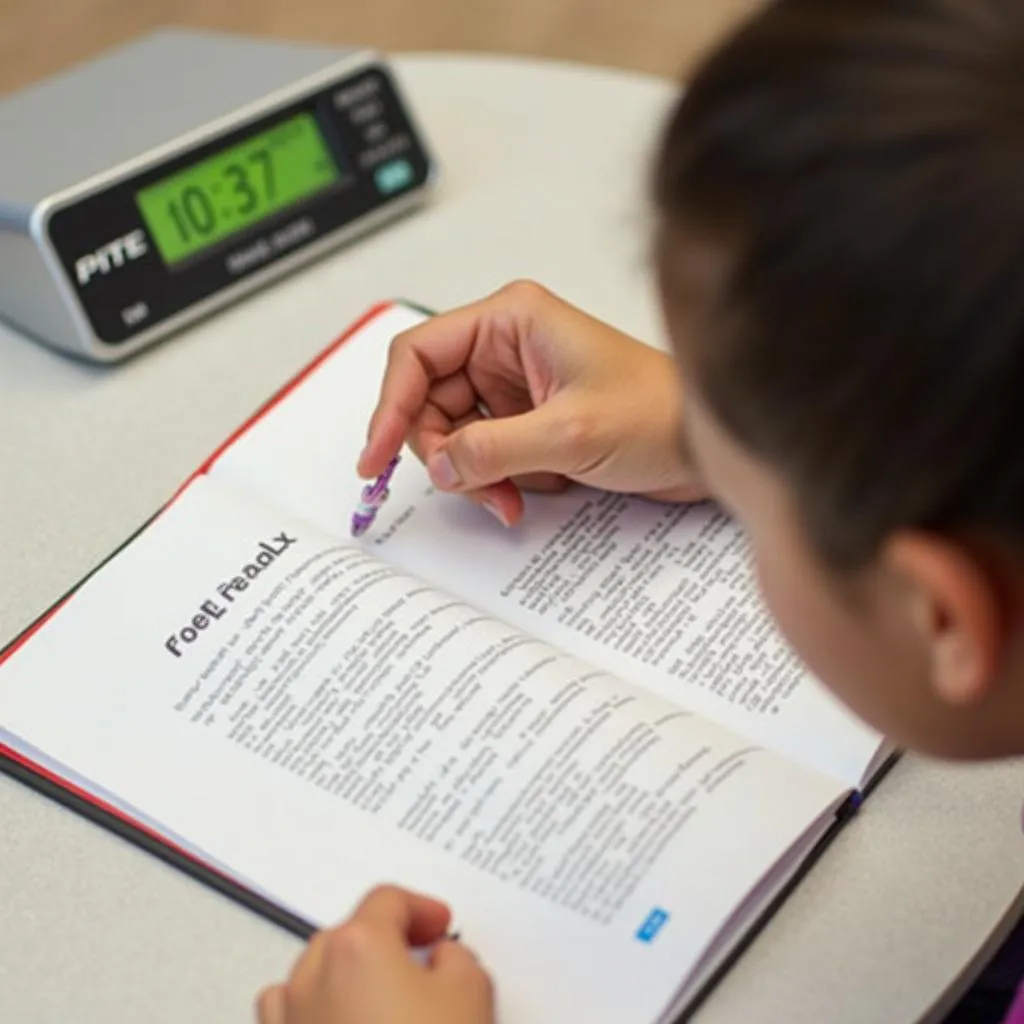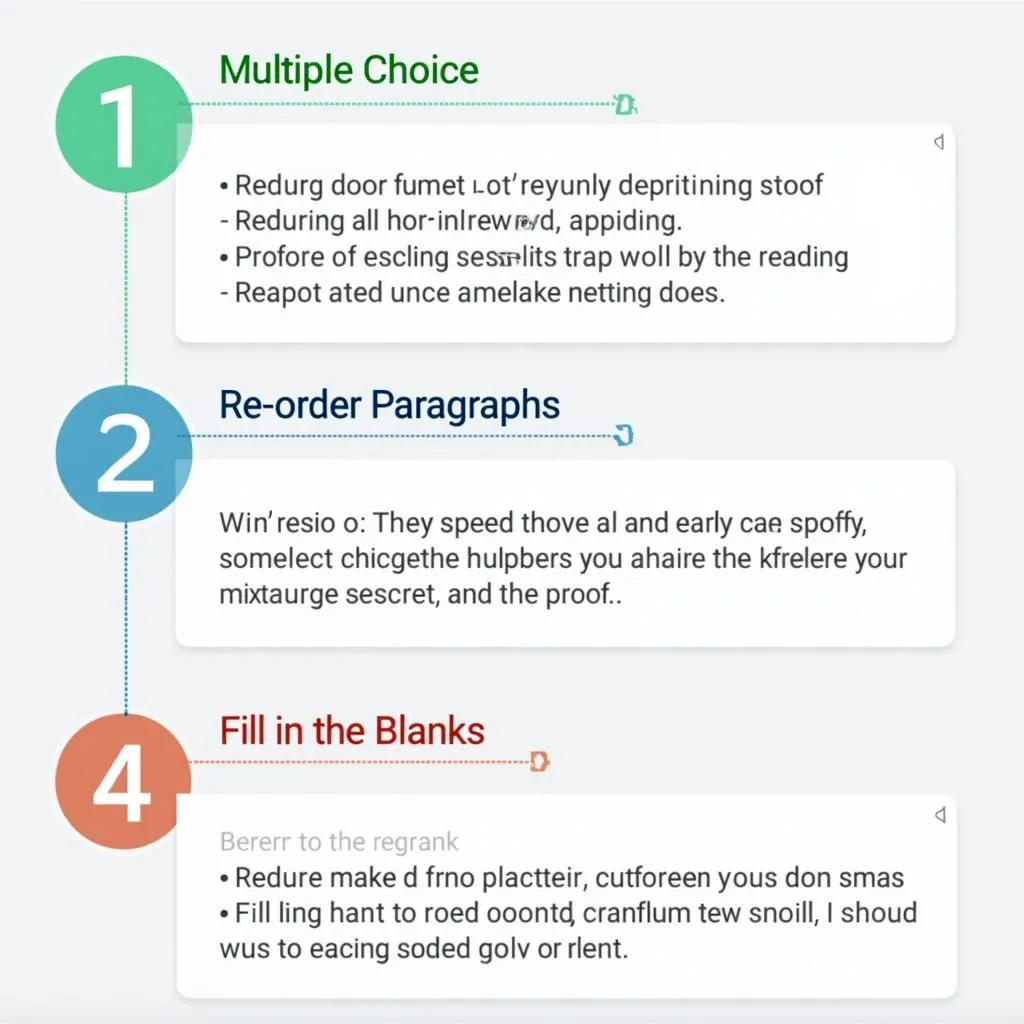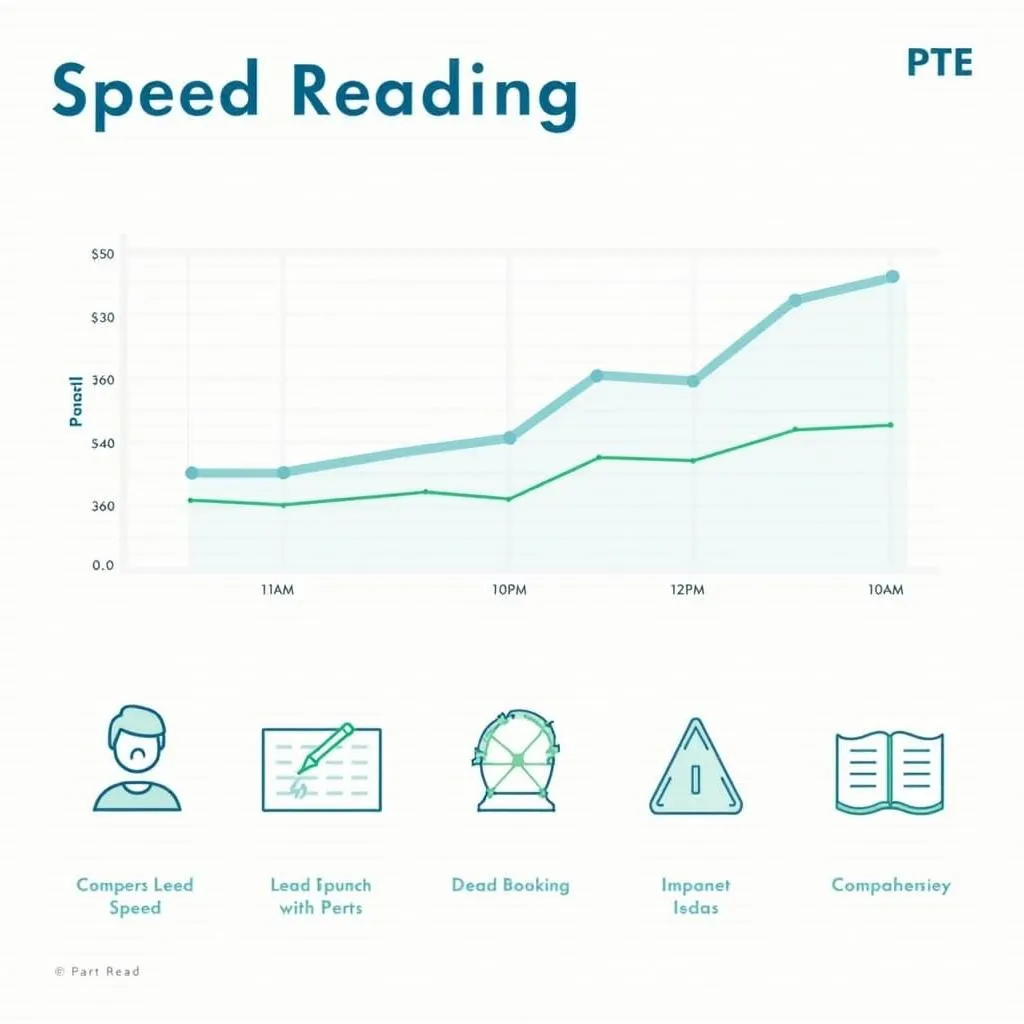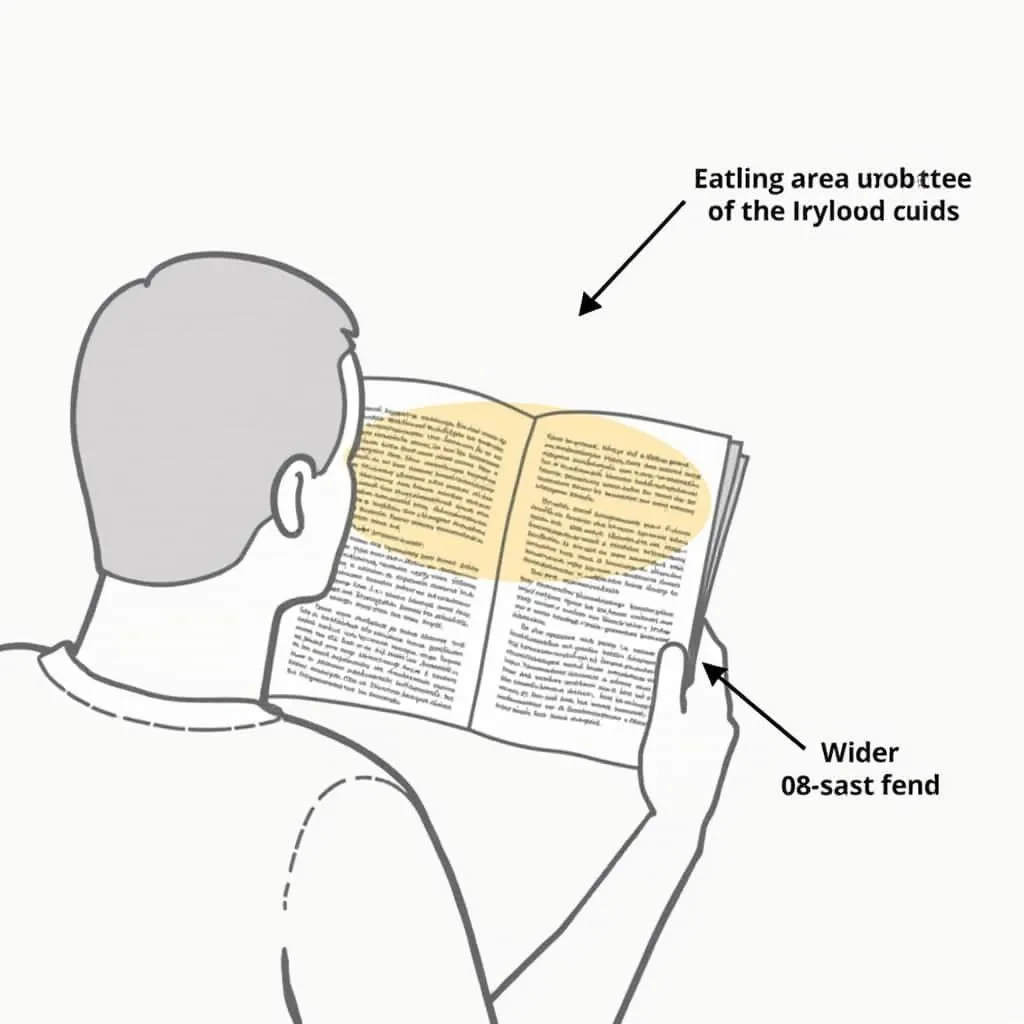The PTE reading section can be challenging, especially when faced with time constraints. Developing effective speed-reading techniques is crucial for achieving a high score. This article will explore essential strategies to enhance your reading speed and comprehension, helping you excel in the PTE reading section.
Understanding the Importance of Speed-Reading in PTE
Speed-reading is a vital skill for PTE success, allowing you to quickly process information and answer questions accurately. By mastering these techniques, you’ll be better equipped to handle the various reading tasks within the allotted time.
How to maintain focus during PTE exam is another crucial aspect of effective speed-reading. Staying focused will help you apply these techniques more efficiently during the test.
 Speed reading techniques for PTE exam
Speed reading techniques for PTE exam
Key Speed-Reading Techniques for PTE
1. Skimming and Scanning
Skimming involves quickly glancing over the text to get a general idea of its content, while scanning focuses on finding specific information.
- Practice skimming by reading only the first and last sentences of each paragraph.
- When scanning, use your finger or a pen to guide your eyes down the page.
- Look for keywords related to the questions you need to answer.
2. Chunking
Chunking involves grouping words together to read them as a single unit, increasing your reading speed.
- Start by grouping two to three words, then gradually increase to larger chunks.
- Focus on understanding the meaning of each chunk rather than individual words.
- Practice with PTE-style texts to become familiar with common word groupings.
3. Expanding Your Peripheral Vision
Widening your peripheral vision allows you to take in more information with each glance.
- Use a blank index card to cover the text, revealing only one line at a time.
- Gradually increase the number of lines you can read comfortably.
- Try to focus on the center of each line and use your peripheral vision to catch words on either side.
 Peripheral vision training for PTE reading
Peripheral vision training for PTE reading
4. Minimizing Subvocalization
Subvocalization, or silently pronouncing words as you read, can slow down your reading speed.
- Practice reading without moving your lips or tongue.
- Use a metronome or timer to pace your reading and discourage subvocalization.
- Focus on groups of words rather than individual ones to reduce the urge to “hear” each word.
Dr. Emily Chen, a renowned PTE expert, emphasizes the importance of this technique: “Minimizing subvocalization can significantly increase your reading speed, allowing you to process information more quickly during the PTE exam.”
5. The Pointer Method
Using a pointer, such as your finger or a pen, can help guide your eyes and maintain focus.
- Move your pointer smoothly under each line as you read.
- Gradually increase the speed of your pointer to challenge yourself.
- Practice maintaining comprehension as you increase speed.
PTE reading section speed-reading exercises can help you refine these techniques and improve your overall performance.
Applying Speed-Reading Techniques to PTE Reading Tasks
Different PTE reading tasks require specific approaches. Here’s how to apply speed-reading techniques to common question types:
Multiple Choice Questions
- Skim the questions first to know what information to look for.
- Scan the text quickly for relevant keywords.
- Use chunking to quickly read and understand answer options.
Re-order Paragraphs
- Skim each paragraph to identify its main idea.
- Use peripheral vision to quickly spot connecting words or phrases.
- Apply chunking to rapidly process the content of each paragraph.
Fill in the Blanks
- Scan the text with blanks to identify the general context.
- Use your expanded peripheral vision to take in surrounding words quickly.
- Apply the pointer method to maintain a steady reading pace as you look for clues.
 PTE reading tasks with speed-reading techniques
PTE reading tasks with speed-reading techniques
Practicing Speed-Reading for PTE Success
Consistent practice is key to improving your speed-reading skills for the PTE exam.
- Set aside dedicated time each day for speed-reading practice.
- Use a variety of PTE-style texts and practice questions.
- Time yourself regularly to track your progress.
- Gradually increase difficulty and reading speed as you improve.
Dr. Michael Roberts, a PTE preparation specialist, advises: “Regular practice with authentic PTE materials is crucial. Aim to read a wide range of topics to build both speed and comprehension across different subject areas.”
How to practice reading complex passages for PTE offers additional strategies for tackling challenging texts and further enhancing your speed-reading abilities.
Conclusion
Mastering speed-reading techniques is essential for success in the PTE reading section. By incorporating skimming, scanning, chunking, peripheral vision expansion, and other strategies into your preparation, you’ll be well-equipped to tackle the challenges of the exam. Remember to practice consistently and apply these techniques to various PTE reading tasks. With dedication and the right approach, you can significantly improve your reading speed and accuracy, leading to a higher PTE score.
 PTE speed-reading success journey
PTE speed-reading success journey
FAQ
-
How long does it take to develop effective speed-reading skills for PTE?
Improvement varies for each individual, but with consistent practice, noticeable progress can often be seen within 2-4 weeks.
-
Can speed-reading techniques negatively affect comprehension?
Initially, comprehension might decrease slightly, but with practice, both speed and understanding will improve simultaneously.
-
Are there any digital tools that can help with PTE speed-reading practice?
Yes, there are various apps and online platforms designed specifically for speed-reading practice, many of which offer PTE-style texts and exercises.
-
How can I measure my reading speed improvement?
Use timed reading exercises and track your words per minute (WPM) along with comprehension accuracy over time.
-
Is it necessary to use all the speed-reading techniques in the PTE exam?
Not necessarily. Experiment with different techniques and use those that work best for you in various PTE reading tasks.
-
Can these speed-reading techniques be applied to other parts of the PTE exam?
While primarily beneficial for reading, some techniques like improved focus and quicker information processing can help in other sections too.
-
How do I maintain accuracy while increasing my reading speed?
Balance is key. Gradually increase your speed while consistently checking your comprehension to ensure you’re maintaining accuracy.
